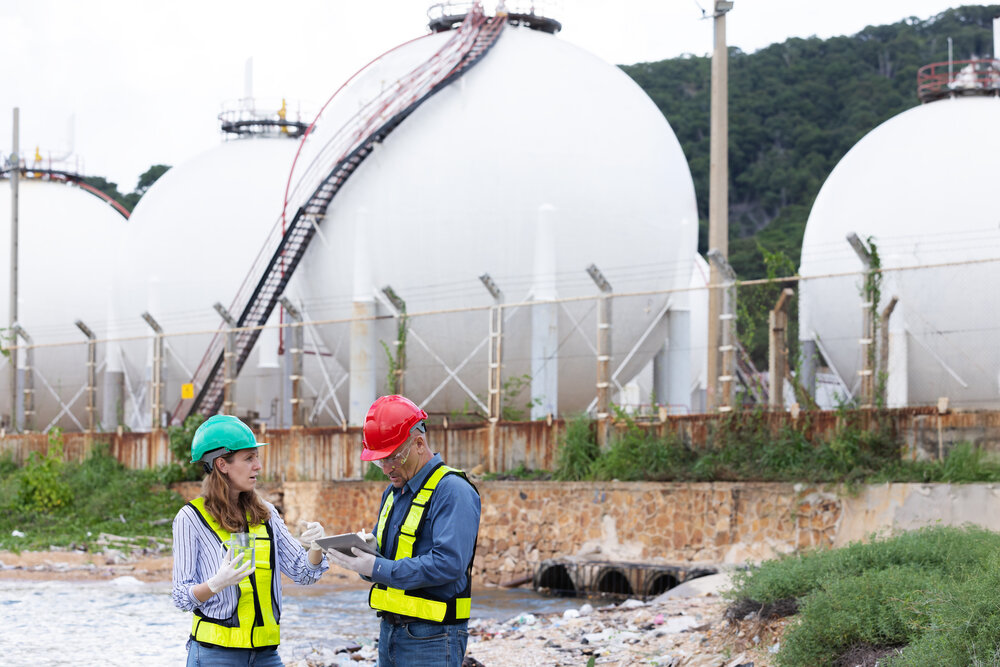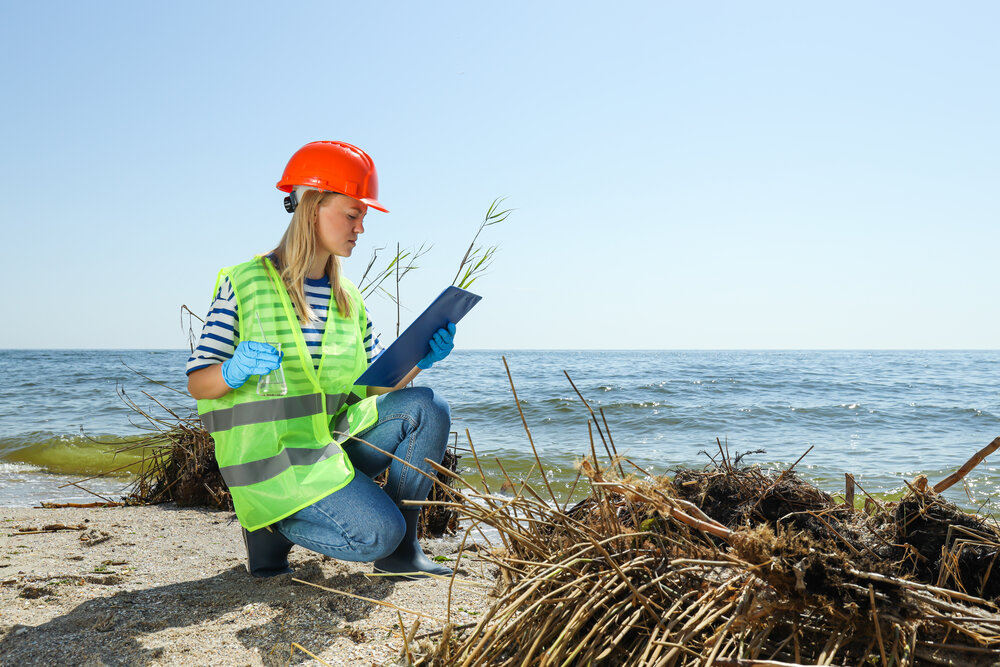Key Takeaways:
- Since the 1980s, the term ecological assessment has been widely used, encompassing a broad range of approaches from a one-week task to year-long, compex in-depth studies.
- They matter because as humans we rely on and take for granted the ecosystem services provided by nature.
- Identifications from EcIAs could include loss of important hedgerows, breeding bird disturbance, or bat foraging routes affected, with details into the scale and ecological significance of the impacts.
- This type of assessment may uncover fragmented wildlife corridors, pressure on water resources, or increased traffic emissions.
Ecological assessments involve data collection to provide information on a wide range of factors across land and nature. They benefit both developers and the environment by ensuring potential risks are identified early and managed responsibly.
The 6 main types of ecological assessments have been widely established since the 80s, each fit to different project scales and types from small new developments to large complex neighbourhoods.
Our blog delves into these main types and their importance, why they matter, how they work in action, who they’re for, and how they protect nature by considering it wholly from the outset rather than the start.
What is an Ecological Assessment?
Ecological Assessment is an umbrella term used in planning / environmental discourse in the UK, covering the range of ecological studies carried out alongside land management, policy, and development.
Since the 1980s the term has been widely used, encompassing a broad range of approaches from a one-week task to year-long, in-depth studies.
Across practice, the 6 below (PEA, EcIA, HRA, BNG, EIA, SEA) are most commonly recognised in UK planning. They altogether ensure that nature is being thought about from the very offset of any new project.
These assessments are legally required when a development meets the ecological triggers, such as size, rare habitats, or protected nature.
Different types of ecological assessments get commissioned by developers, landowners, and local authorities.
An ecologist / multi-disciplinary team / environmental consultancy is then hired to conduct the analysis, with project length depending on the scale of the development, its set aims, and its environmental context.
Why Ecological Assessments Matter
Ecological assessments matter because they ensure that nature is considered even before the very start of new developments. This identifies all potential risks and impacts before any development has begun, avoiding redesigns by planning around nature at the site.
Without these assessments, ecosystems would break, and habitats would be lost at a major scale. Moreover, planning applications would be refused on a major scale, with developers refused or even prosecuted for illegal harm to wildlife.
They matter because as humans we rely on and take for granted the essential ecosystem services provided by nature. Careless development would easily destroy wildlife corridors, essential habitats, protected areas, and be detrimental to the planet, and subsequently us, as a result.
While the assessments have been in place for decades, we are still in a biodiversity crisis. The assessments are not sufficient on their own, hence Biodiversity Net Gain has come in from 2024.
This means that it’s no longer good enough to mitigate harm to nature; developers must now uplift nature by at least 10%.
Key Ecological Assessment Examples

1. Preliminary Ecological Appraisal
A Preliminary Ecological Appraisal (PEA) is an initial ecological survey to quickly assess the ecological features of a site.
Conducted by ecologists, it consists firstly of a desk study (searching records, aerial imagery and data sets for potential present ecology), followed by a site walkover (with a clipboard and habitat map).
Developers commonly hire ecologists to conduct PEAs at new sites because Local Planning Authorities (LPAs) seek baseline information. In this general sense, the assessment is to identify potential constraints of a site, from potential bat roosts to nesting birds or priority habitats (e.g. ancient woodlands).
Post-Biodiversity Net Gain (BNG), PEAs often double as a more specific BNG-focused baseline survey to identify if BNG is an economically viable decision at a potential BNG site.
By establishing the ecological baseline, the ecologist can go on to then determine how many Biodiversity Net Gain units (BNG units) the site can deliver over the 30 year mandated period, hence if it’s worth the landowner moving forward.
Rough prices for this service range from £500 – £1,500, with a couple of days of work, a couple of weeks of analysis and then the report.
2. Ecological Impact Assessment
An Ecological Impact Assessment (EcIA) is what follows a PEA if the project meets EcIA Regulations. For instance, the development’s type (major infrastructure, large quarries, intensive agriculture etc.), size (over 5 hectares, etc.), and location (SSSIs, national parks, etc.)
Only when the site meets any of these, an EcIA is undertaken after the PEA. These jump in price to £3,000- £10,000, involving more extensive surveys across species and habitat, following a mitigation hierarchy to protect nature in the correct order.
This can take a few months of surveys, reporting, and analysis to identify all potential impacts the development can have on the site’s ecology, whether direct (habitat loss), indirect (pollution), or cumulative (combined with other developments’ impacts).
Identifications from EcIAs could include loss of important hedgerows, breeding bird disturbance, or bat foraging routes affected, with detail into the scale and significance of the impacts.
3. Habitat Regulations Assessment
A HRA (Habitat Regulations Assessment) is only commissioned at sites of protected nature (SSSIs, SACs, SPAs, etc.).
Due to their critical importance, this legal test under the Habitat Regulations is required to ensure no harm to these essential lasting ecological sites.
If a site falls under or touches a protected area, the council or developer will commission a HRA and this might run parallel to an EcIA. This isn’t part of BNG, but a requirement under EU and UK law.
This can take 2 – 6 weeks, and cost anything from £2,000 – £10,000 for projects (individual developments), and £5,000 – £20,000 for plans (broader policies/strategies).
By assessing the project’s various impacts against the site’s set conservation requirements, the HRA establishes whether appropriate mitigation measures are possible to allow the development to go ahead. They can easily stop developments in their tracks.
4. Biodiversity Net Gain Assessment
Biodiversity Net Gain became a legal requirement for new developments in 2024, and every eligible site must now undergo a Biodiversity Net Gain Assessment to demonstrate compliance.
In terms of landowners selling their land as BNG units, it happens after the baseline survey (or PEA) which has established present habitats, to then show how many BNG units can be uplifted.
In terms of developers meeting BNG requirements, the BNG assessment outlines how they can deliver the 10% net gain on-site.
The cost can vary from £1,500 – £5,000, involving the baseline survey, Defra’s metric, and a subsequent Habitat Management and Monitoring Plan (HMMP) outlining the steps exactly.
5. Environmental Impact Assessment
While EcIAs are ecology-focused, Environmental Impact Assessments (EIAs) are a broader study of a project’s environment: landscape, noise, traffic, culture, climate, soil, water, air, ecology and more.
This can cost anything from £30,000 – £100,000 and often takes anything from half a year to a full year for larger schemes. EIAs are enormous, requiring teams of experts in ecology, traffic, air, hydrology, groundwater, noise, archaeology, visual impact modelling, and so forth.
EIAs are only required for developers of major infrastructure such as airports, quarries, wind farms, roads or sites near protected areas.
The resulting extensive PDF is a legal requirement for these large-scale projects, ensuring environmental considerations have been considered in sufficient depth.
Once BNG becomes mandatory for NSIPs (Nationally Significant Infrastructure Projects) in 2026, it’s likely that EIAs not just minimise harm to nature, but must also demonstrate the 10% uplift.
6. Strategic Environmental Assessment
Finally, a Strategic Environmental Assessment (SEA) is an environmental appraisal (evaluation) of the suspected environmental effects of a programme (e.g. a national transport programme funding nationwide road upgrades) or a plan (e.g. a Local Plan).
A consultant is commissioned by the LPA or government / agency to test the environmental effects of their new plan or programme before its adoption. Involving desk studies, modelling, and consultation, this can take 3 – 6 months and cost £5,000 – £15,000 for a neighbourhood plan, or £15,000 – £40,000 for a local plan.
This type of assessment may uncover fragmented wildlife corridors, pressure on water resources, or increased local traffic emissions. Flagging these early on, they’re then able to adjust the policy to ensure harm to nature is mitigated where possible.
These are mandatory for most larger Local Plans, Minerals and Waste Plans, Neighbourhood Plans and more.
Methods Used in Ecological Assessments

While the methods used in ecological assessments vary, most of them use these common types:
- Targeted species surveys, commonly used in PEAs, EcIAs, and EIAs, such as bat or crested newt surveys. A specialist ecologist surveys throughout the seasons to capture breeding or activity.
- Walkover habitat surveys are used in PEAs with their results going into EcIAs, EIAs and BNG. This involves a site visit with the ecologist noting things like bird nests or badger setts, plus the habitats using the UKHab classification.
- GIS mapping and impact evaluation is software for layering spatial data on maps, to measure specific habitat losses and evaluate their extent, used predominantly in EcIAs plus the ecology focus of others.
- Defra biodiversity metric calculations to track baseline habitats and uncover predicted gains based on habitat size, condition, distinctiveness, connectivity, and type. Used in BNG assessments and some PEAs.
- Public consultation is used in EIAs and SEAs, e.g. involving local residents to share their feedback on a new Local Plan, in the form of questionnaires, exhibitions, or formal consultations. This ensures community concerns are taken onboard.
More Information
https://www.gov.uk/government/publications/statutory-biodiversity-metric-tools-and-guides
https://www.gov.uk/guidance/biodiversity-net-gain
FAQs
What is an Ecological Assessment?
Ecological Assessment is an umbrella term used in planning / environmental discourse in the UK, covering the range of ecological studies carried out alongside land management, policy, and development.
Why do ecological assessments matter?
Ecological assessments matter because they ensure that nature is considered even before the very start of new developments.
Who commissions ecological assessments?
Different types of ecological assessments get commissioned by developers, landowners, and local authorities.
What happens if developments don’t carry out ecological assessments?
Without these assessments, ecosystems would break, and habitats would be lost at a major scale.
When did Biodiversity Net Gain become a legal requirement?
Biodiversity Net Gain became a legal requirement for new developments in 2024, and every eligible site must now undergo a Biodiversity Net Gain Assessment to demonstrate compliance.

